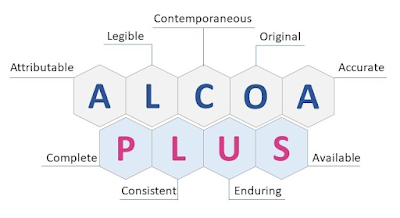The pharmaceutical industry has zero tolerance when it comes to ensuring the quality of drug produced. The reason behind that is quite obvious, since even a slight deviation from the desired product can have devastating repercussions on a mass level.
The US Food and Drug Administration (FDA) has put in place certain regulatory guidelines that need to be adhered to in order to release a product into the market. In the 1990s, the regulatory body put in place a framework called ALCOA, that serves as a checklist to help with regulatory compliance. Shortly after that, FDA released a section known as 21 CFR Part 11, with the intent to help pharmaceutical companies maintain data integrity while utilizing modern technology, by ensuring all information verified through these systems check all the boxes for regulatory compliance.
Although these two frameworks were introduced in the 1990s, a quick scan of the 483s issued these days clearly points to the fact that several pharmaceutical companies struggle to meet FDA’s regulatory guidelines even today.
Most pharmaceuticals finding it difficult to adhere to FDA guidelines could benefit from solutions compliant with the aforementioned concepts and GMP. A simple way any pharma company can ensure regulatory compliance is by adopting a high-quality eLog solution.
What is an eLog?
Simply put, an eLog management solution digitizes your area and equipment logs, enabling you to verify or review them online.
It helps you capture data and details of a batch, people involved and time of an activity from an area/equipment as and when it happens, storing and preserving your logs electronically, which can be searched and retrieved at any time.
It also helps you organize your data and presents it in the form of reports that are easy to comprehend.
eLogs allow you to cut down on costs incurred in printing, storing and retaining documents and makes managing your audit easy. You can store your data securely, accessing it any time you wish to and it helps you become more sustainable by completely eliminating the use of paper.
How can an eLog solution help you with compliance? Let’s find out. For more information, Visit https://www.pharmision.barcodeindia.com/blogs/how-adopting-an-elog-solution-helps-with-regulatory-compliance/










